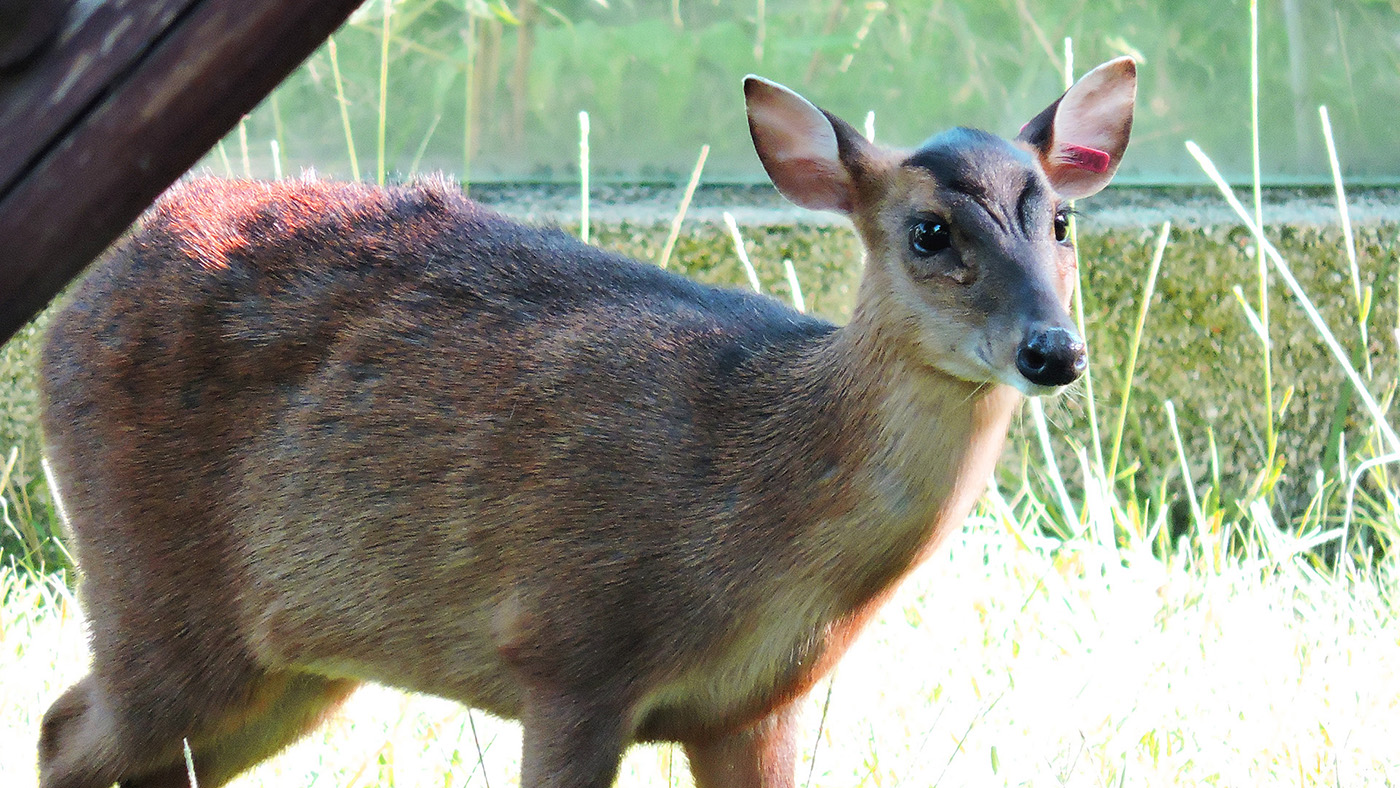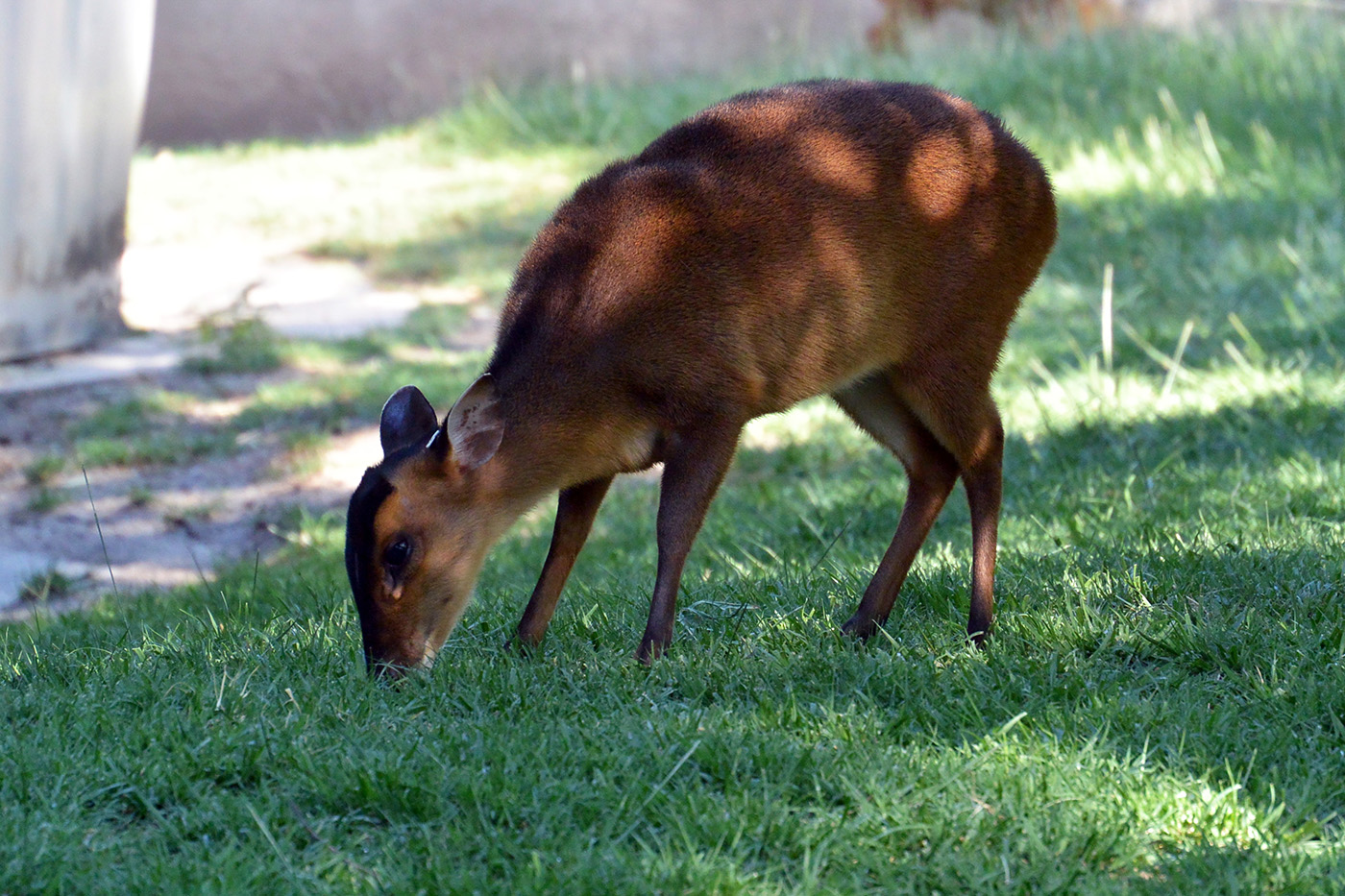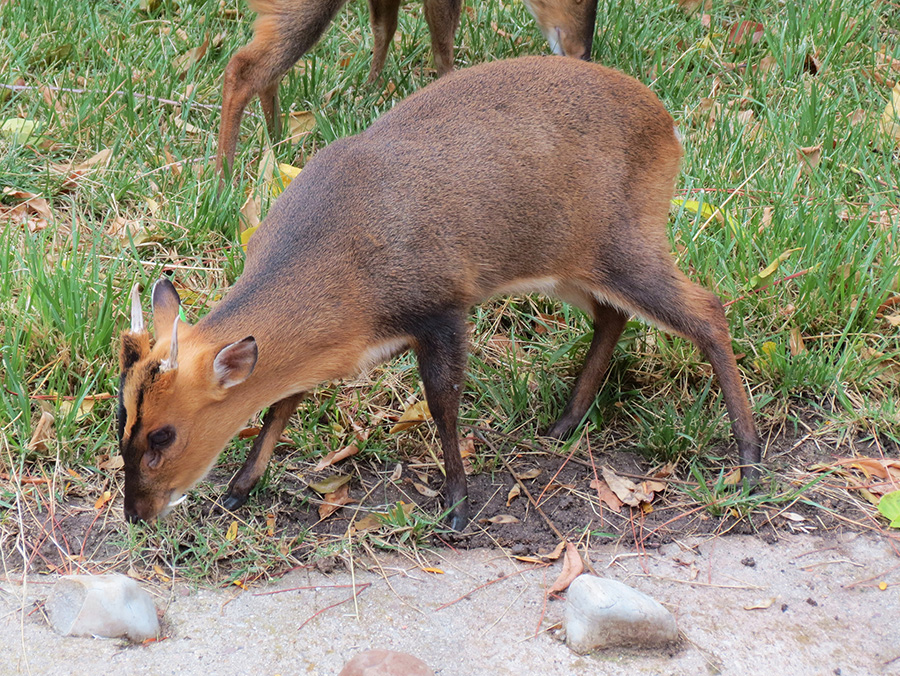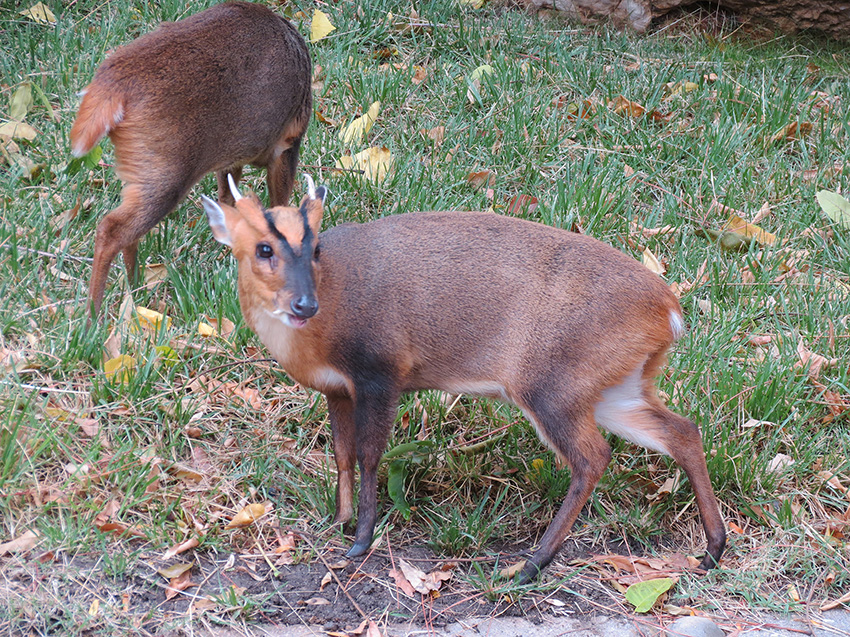This small deer is endemic to China. It is also called “the barking deer” because of the characteristic sound it emits when it feels threatened.
Its large upper tusks stand out, measuring up to 6 centimeters in the case of males. Their visible preorbital glands are used for chemical communication. Only males have antlers, which they renew every summer.
It is surprisingly omnivorous due, in addition to bamboo, fruits and foliage, it eats eggs, carrion and even small mammals.
The species is basically solitary, although it is sometimes found in pairs or small family groups.
With crepuscular habits, they are territorial and solitary animals. Males compete with each other through fights in which they use their tusks and antlers.
Females reach sexual maturity at around 7 months of age. After a gestation period of approximately 210 days, a calf is born. The young grow rapidly and after 6 months leave the mother's territory.




















